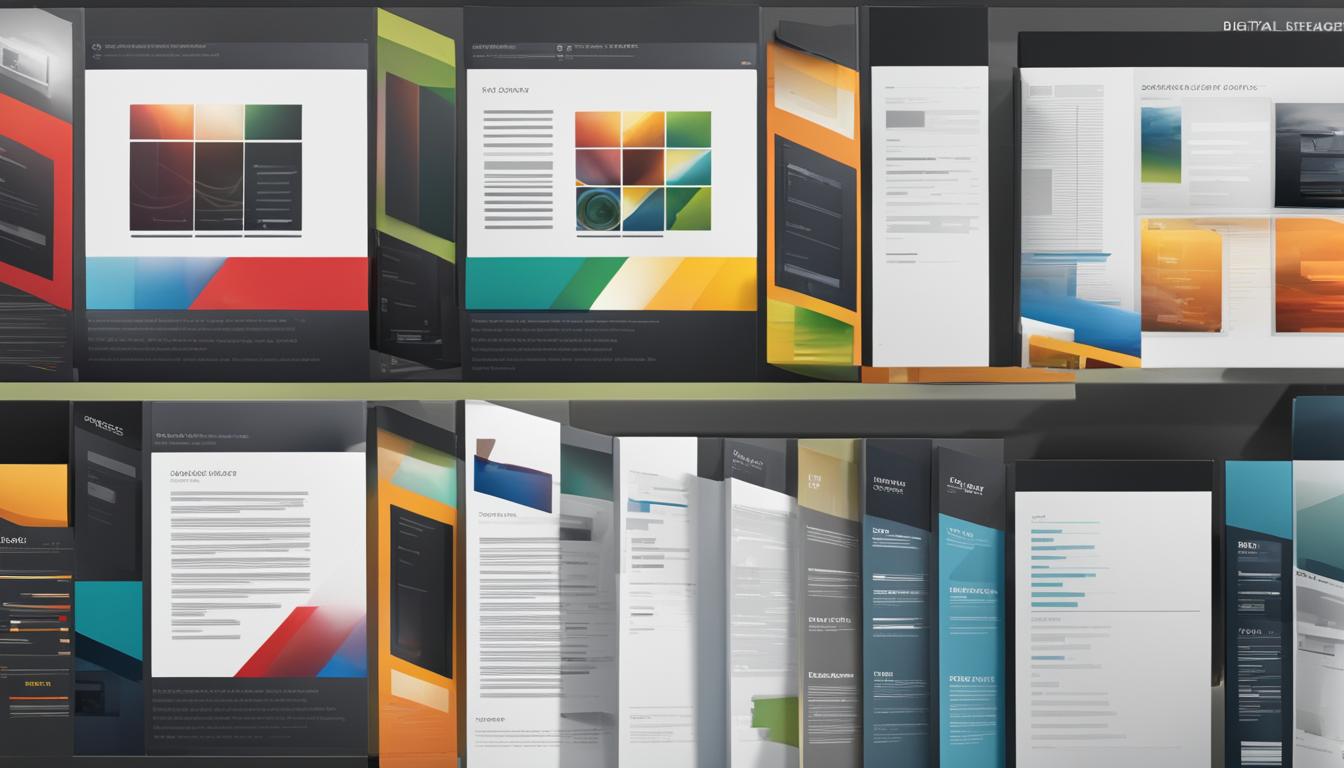Hey there! I’m here to talk to you about the importance of alt text in SEO and how it can optimize your website for better search engine rankings. So, let’s dive right in!
Alt text, also known as an alt attribute or alt tag, is a small snippet of information that describes an image. It may seem like a minor detail, but alt text plays a significant role in SEO. Why? Because search engines rely on alt text to understand and index the content of an image.
Optimizing alt text is essential for your website’s visibility in search results and overall SEO strategy. Not only does it help search engines interpret your images, but it also enhances the accessibility for visually impaired users.
When you don’t set alt text for your images, you’re missing out on a golden opportunity to improve your website’s SEO. Search engines won’t be able to properly index and rank your images, which can negatively impact your search engine rankings.
So, how can you optimize your alt text for SEO? Let me share some best practices:
- Be descriptive: Provide relevant information about the image without keyword stuffing.
- Keep it concise: Write alt text that accurately describes the image in a clear and concise manner.
- Focus on the image: Describe the image itself rather than unrelated keywords.
By following these alt text best practices, you’ll be able to enhance your website’s SEO and provide a better user experience for all visitors.
Now that you understand the importance of alt text in SEO, it’s time to put this knowledge into action and optimize the alt text for the images on your website. Trust me, it’s worth the effort!
Key Takeaways:
- Alt text, also known as an alt attribute or alt tag, describes an image and is crucial for SEO.
- Optimizing alt text improves website visibility in search results and enhances accessibility for visually impaired users.
- Descriptive and concise alt text is essential, avoiding keyword stuffing and focusing on accurately describing the image.
- By optimizing alt text, you can boost your website’s search engine rankings and provide a better user experience.
- Remember to set alt text for all images on your website to ensure maximum SEO benefits.
That’s it for now! Stay tuned for more tips and tricks on SEO optimization. Happy alt text writing!
What is Alt Text?
Alt text is an essential component of web design and accessibility. Also known as an alt attribute, alt description, or alt tag, it is a short description that provides information about what an image shows. Alt text was originally developed to enhance the internet browsing experience for the blind and visually impaired by helping screen readers convey the content of images.
Alt text is not visible on the webpage but is embedded within the HTML code. When an image fails to load or is unable to be displayed, the alt text is displayed as a substitute. This description serves as a text alternative for visually impaired users, allowing them to understand the image’s context and content.
But alt text is not just important for accessibility; it also plays a crucial role in search engine optimization (SEO). Search engines rely on alt text to understand and index images, which helps in improving a website’s visibility in search results.
“Alt text is like a caption for search engines. It provides them with valuable information about the images on your website, helping them crawl and index your content more effectively.”
When it comes to writing alt text, accuracy and relevance are key. Alt text should provide a concise and accurate description of the image’s content, without resorting to keyword stuffing or irrelevant information. By striking the right balance between descriptive and concise, alt text can effectively communicate the image’s purpose while also boosting SEO.
The Importance of Alt Attributes
The alt attribute is the HTML attribute used to specify alternative text for an image when it cannot be displayed. It is added to the img tag elements within the HTML code of a webpage. Alt attributes are essential for accessibility, as they allow visually impaired users to understand the content of images through screen readers.
Additionally, alt attributes are also crucial for SEO. Search engine crawlers rely on alt attributes to understand and index images, as they cannot analyze the visual content of images directly. By including descriptive and relevant alt attributes, website owners can improve their website’s visibility and ranking in search engine results pages (SERPs).
It is important to note that alt attributes should accurately describe the image and its context without being overly long or filled with keywords. The primary focus should be on providing meaningful information for users, both visually impaired and search engine crawlers.
How Does Alt Text Impact SEO?

Alt text, also known as an alt attribute or alt tag, is not only important for accessibility but also plays a significant role in SEO. Search engines rely on alt text to understand and index images, making it a crucial search engine ranking factor. By providing relevant and descriptive alt tags, websites can improve their visibility in search results and attract more organic traffic.
When an image cannot be displayed, alt text provides context and information about the image to users. This enhances user experience, especially for those with visual impairments who rely on screen readers to navigate websites. By including alt text, websites can ensure their content is accessible to all users, which is an important aspect of SEO.
“Alt text makes images more accessible for visually impaired users, while also benefiting search engine optimization.”
Without alt tags, search engines may struggle to understand the content of images, resulting in missed opportunities to rank higher in search results. Alt text provides valuable information to search engine crawlers, enabling them to interpret the image and include it in relevant search queries. This improves the chances of the image appearing in image search results and driving more organic traffic to the website.
| Impact of Alt Text on SEO | Benefits |
|---|---|
| Improved search engine visibility | Higher rankings in search results |
| Enhanced user experience | Improved accessibility for visually impaired users |
| Inclusion in image search results | Increased organic traffic |
For SEO optimization, it is essential to write descriptive alt text that accurately represents the image’s content. Avoid keyword stuffing and instead focus on providing meaningful descriptions that enhance both the user experience and search engine rankings. Additionally, regularly reviewing and optimizing alt text for images on your website ensures that search engines can properly index and interpret your visuals.
How to Write Good Alt Tags

When it comes to writing alt tags, it’s crucial to keep in mind their intended purpose: to provide a descriptive explanation of the image for visually impaired users. It’s important to avoid writing alt tags solely for SEO purposes or engaging in keyword stuffing. Instead, focus on creating alt tags that are concise yet descriptive, using one or two keywords that accurately capture the essence of the image. By providing details about the image rather than using generic terms, you can optimize alt text for both accessibility and user experience.
Descriptive alt text plays a key role in improving website accessibility, allowing visually impaired users to understand and engage with the content. In addition, it enhances the overall user experience by providing meaningful context for images when they cannot be displayed. Remember, the alt attribute should contain keywords related to the current section to optimize it for SEO.
“Alt tags are like captions for the visually impaired. They help provide a vivid description of the image and enhance the browsing experience for everyone.”
By implementing these alt text best practices, you can ensure that your website is both accessible and optimized for search engines to properly interpret and index your images. Take a look at the example below to get a better understanding of good alt text:
Example 1:
Good alt text: “A smiling woman holding a deliciously crafted chocolate cake with whipped cream and strawberries.”
Example 2:
Bad alt text: “Cake.”
As you can see, the first example provides a detailed and descriptive explanation of the image, while the second example lacks context and fails to serve its purpose effectively. Remember, writing good alt tags not only helps improve website accessibility but also enhances the overall user experience, making it a win-win situation.
Examples of Good & Bad Alt Text

When it comes to alt text, there are clear examples of good and bad practices. Good alt text is descriptive, concise, and accurately reflects what the image depicts. On the other hand, bad alt text often includes generic terms or fails to provide enough context for visually impaired users. Let’s take a look at some examples:
Bad Alt Text:
I love the thrill of skiing down a snowy mountain!
This example shows bad alt text that simply states “skiing.” While it technically describes the image, it doesn’t provide any meaningful or descriptive information. Visually impaired users and search engines will have a difficult time understanding what the image actually shows.
Good Alt Text:

A man skiing down a snow-covered mountain, surrounded by beautiful winter scenery.
In contrast, this example demonstrates good alt text that provides a descriptive explanation of the image. It accurately describes the subject (a man skiing down a snow-covered mountain) and adds context about the surrounding environment (beautiful winter scenery). This alt text is both informative and accessible, benefiting visually impaired users and improving search engine optimization.
Comparison: Bad vs. Good Alt Text
| Bad Alt Text | Good Alt Text |
|---|---|
 |
|
| Simply states “skiing” | Describes a man skiing down a snow-covered mountain |
| Does not provide relevant details | Offers descriptive information about the image |
Make Sure Your Images Have Alt Text!
Setting alt text for all images on your website is crucial for optimizing your search engine presence. Without alt text, search engines may struggle to understand and index your image content effectively. To ensure you have alt text for all images, take the time to review each image and add relevant and descriptive alt text. By providing detailed alt text, you improve the accessibility of your website for visually impaired users and enable search engines to accurately interpret the content of your images.
Alt text is an integral part of a well-optimized website and follows best practices for SEO. It also helps search engine crawlers understand and index your images correctly, leading to better visibility in search results.
By following alt text best practices, you enhance the overall user experience on your website and boost SEO. Here are some key tips to keep in mind:
- Be descriptive: When writing alt text, be descriptive and provide relevant information about the image. Focus on accurately describing the image rather than just using generic terms.
- Avoid keyword stuffing: While it’s important to include keywords in your alt text, avoid stuffing it with excessive keywords. Keep your alt text concise and natural.
- Consider the context: Ensure that your alt text reflects the context of the webpage and provides meaningful information related to the image content.
Remember, alt text improves the accessibility of your website and helps search engines understand your images. By optimizing your alt text and ensuring it is set for all your website’s images, you can enhance your search engine rankings and provide a better user experience.
Adding alt text to your images is easy and can have a significant impact on your website’s SEO. Take the time to review your images and update their alt text to optimize your website for search engines and improve user accessibility.
The Impact of Alt Text on Image Search
Alt text plays a crucial role in image search as it helps search engines understand and rank images properly. By providing context and descriptions in alt text, images have a greater chance of appearing in image search results and image packs. This enhances the visibility of images and drives more organic traffic to your website.
Optimizing alt text for SEO is essential to maximize the potential of image search. When writing alt text, it is important to be specific and relevant to the image content. Consider both the subject of the image and the context of the webpage. By accurately describing the image using alt text, you can improve its chances of being discovered in search results.
Here’s an example of how alt text can be optimized:
Alt Text: A woman practicing yoga on the beach at sunset
Writing descriptive alt text not only benefits search engines but also enhances the user experience. It provides valuable information about the image for visually impaired users who rely on screen readers. By including alt text, you ensure that everyone can understand and engage with your website’s visual content.
Alt text should be a part of your overall image optimization strategy to maximize image traffic and improve SEO. By investing time and effort in writing effective alt text, you can increase the visibility of your images in search results and ultimately drive more organic traffic to your website.
Alt Text Optimization for Image Search
| Alt Text | Impact on Image Search |
|---|---|
| Generic Alt Text | Decreases visibility in image search |
| Descriptive Alt Text | Increases visibility and chances of appearing in search results |
| Keyword-stuffed Alt Text | Can lead to penalties and negative impact on SEO |
| Accurate Alt Text | Enhances user experience for visually impaired users |
Optimizing alt text is a simple yet effective way to improve your website’s image search performance. By writing specific, descriptive alt text and considering the relevance to the image content, you can increase visibility, drive more image traffic, and enhance the overall user experience.
Conclusion
Alt text is a crucial element for both SEO and accessibility. By providing descriptive information about images, alt text enhances the user experience for visually impaired individuals and helps search engines understand and index images more effectively. To optimize alt text, it is important to be descriptive yet concise, avoiding keyword stuffing and focusing on accurately portraying the image. By implementing alt text best practices, businesses can boost their search engine rankings, increase image traffic, and improve overall website usability.
Image optimization is not complete without setting alt text for all website images. Alt text serves as a bridge that connects both users and search engines to the content of the image. When alt text is not set, visually impaired users may miss out on valuable information, and search engines may struggle to interpret the image’s context. By ensuring alt text is present for all images, businesses can enhance the accessibility and usability of their websites while positively impacting their SEO efforts.
Accessibility should always be a priority, and alt text plays a crucial role in achieving that. By providing descriptive alt text, websites become more inclusive for individuals with visual impairments, allowing them to have equal access to information. At the same time, search engines appreciate alt text because it provides valuable context about images. Therefore, by following alt text best practices, businesses can create a win-win situation, improving both the user experience and search engine visibility. So remember, don’t forget to optimize your alt text and ensure it is set for all website images!










